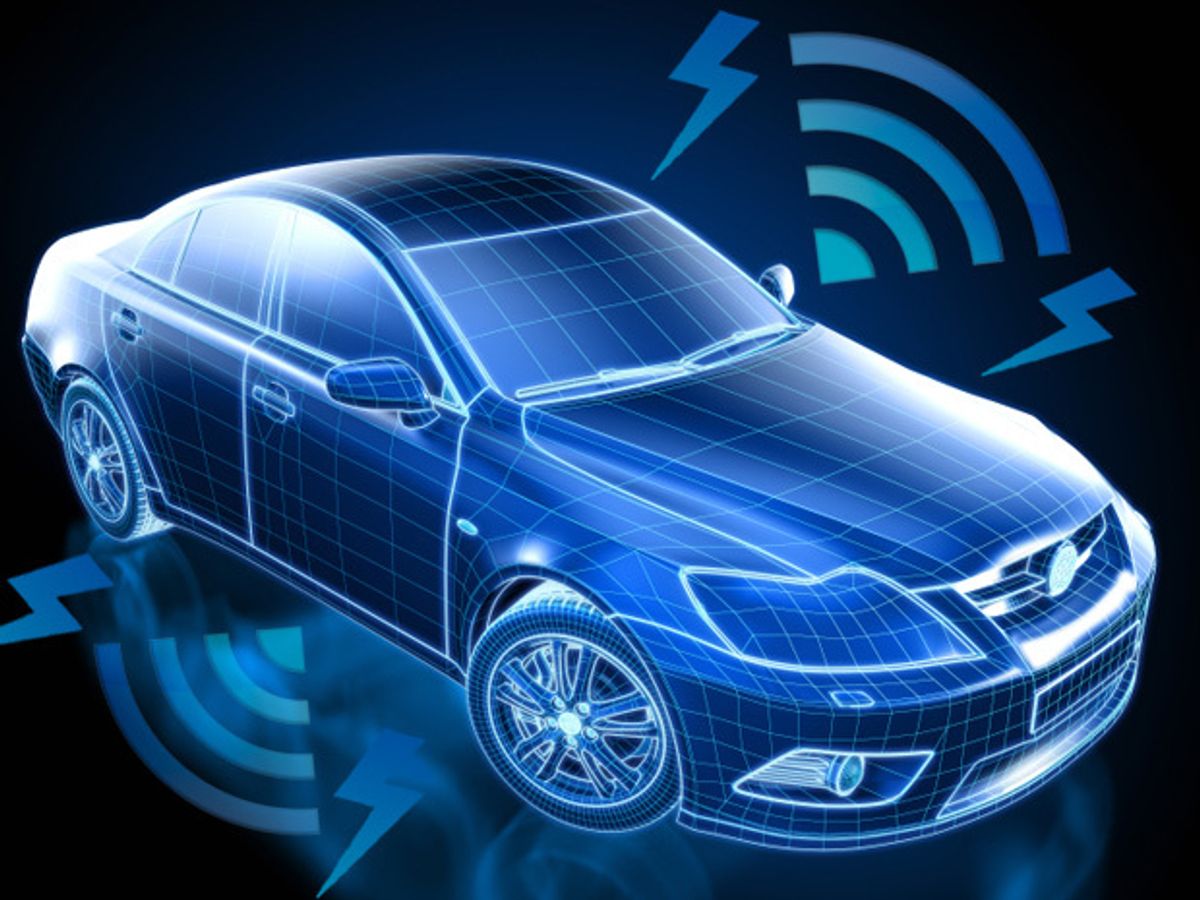You drive home in your electric car, enter your garage, and step out the car holding your briefcase in one hand and groceries in the other. Wouldn't it be nice if you could charge the car without physically plugging in?
Toyota thinks so. Wireless power startup WiTricity announced yesterday that Toyota has licensed inductive charging technology from the MIT spin-off and that the carmaker will build wireless power capture devices into future vehicles. Toyota invested in WiTricity two years ago.
The idea of wireless charging isn't new: GM’s ill-fated EV1 was charged using an inductive paddle. And although wireless charging for EVs or consumer electronics is far from commonplace, advances in the past decade show that the technology is maturing and that manufacturers are committed to building it into their products.
Earlier this year, Satoshi Ogiso—one of the engineers who headed development of the first Prius—said Toyota will begin verifying a wireless power charging system next year in the U.S., Europe, and Japan. Nissan, which makes the all-electric Leaf, is working on a wireless charging system and told reporters last year that it intends to offer it as an option in a 2015 model year Infiniti. Daimler and Volvo are also working on wireless charging and Bosch already sells a wireless charging system for the Leaf and Chevy Volt.
One of the major companies in inductive charging infrastructure is Qualcomm, which acquired wireless vehicle charging technology from London-based HaloIPT two years ago. Now called Qualcomm’s Halo division, the company intends to run a trial in London with wireless charging pads on parking spots and cars equipped with sensors to indicate they are aligned above the charging pad. The Korea Advanced Institute of Science and Technology (KAIST) is running a trial where electric buses are charged while on the move from wireless pads embedded in the road ways.
Inductive charging works by transferring electric power from a transmitter coil to a nearby coupled device, such as a car or phone. When current flows through the coil, it produces a magnetic field. That field induces a flow of electric current on a coil on a receiving device. (For more on the technical challenges of the technology, read "A Critical Look at Wireless Power").
The auto industry association SAE International last month agreed on a frequency range and three power transfer rates for wireless electric vehicle charging. That sets the stage for development of interoperable charging products from different providers.
For WiTricity, the Toyota licensing deal follows an investment in October from Intel’s venture arm, Intel Capital, and contract manufacturer Foxconn. It takes automakers years to build new components, such as a wireless receiver, into their vehicles. But consumer electronics companies are likely to incorporate wireless power into their products sooner, said WiTricity CEO Eric Giler.
WiTricity has already built a prototype of a phone with a wireless receiver built into it. When placed near a laptop with a transmitter coil, the phone charges. “Intel is quite keen to get this into portable devices. If that happens, it’s a reason to get the latest and greatest devices,” Giler said. “Seeing these things in the market in the next 12 to 18 months is entirely realistic.”



